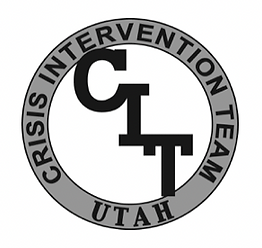“We can’t thank CIT Utah enough for being a big part of saving our son! He was in crisis and after several unsuccessful attempts to get the help he needed, we finally had success with a CIT Utah-trained officer. One of the prior situations could have ended badly, as non-CIT officers chased him through our neighborhood, threw him to the ground and then brought him back in handcuffs. The CIT Utah officer handled the situation in a very calm manner and was able to help our son overcome the panic he was feeling. After months of darkness, this interaction with CIT Utah was the first time that we saw the light at the end of the tunnel. He was then hospitalized, given the care and medications he needed, and is now living a happy, full, and productive life. Thank you CIT Utah!” Since the founding of CIT program in Utah, family and peer advocates (individuals with lived experience) have played a central role in advocating for CIT programs in many communities. This powerful advocacy force has arguably been the driving force behind the national expansion of CIT. The involvement of people living with mental illness, sometimes called peers or consumer advocates, and their families, should be involved at every level in the administration of CIT: oversight, training, and ongoing service support. Peers, family members and have an important perspective to bring to understanding a mental health crisis situation. They are the only people who can explain the experience of mental health symptoms, and they can explain why they have responded positively to mental health providers and law enforcement—or why they have responded with anger or fear. People living with mental illness can educate other partners about what kinds of support promote recovery, even among people in crisis for whom recovery seems out of reach. On the other hand, people living with mental illness may notice barriers to engagement in services that others do not—such as how certain language is stigmatizing, how the location of a treatment center is inaccessible, or how some services do not feel safe for someone in crisis. Including people living with mental illness in particular, is important to building broader community trust in CIT. Others in the peer community pay attention to whether peer advocates are included in a CIT program and how they are treated. When peer representatives are included, they spread the word that CIT is a program that people can trust. Finally, it’s important for other partners to interact with a wide variety of people living with mental illness—including those who are in long-term recovery. There are many challenges to helping people engage in recovery—and those systemic challenges can contribute to mental health providers, law enforcement, and even families feeling frustrated and hopeless. Working alongside people in long-term recovery is an excellent reminder that supporting people in recovery is an important goal of CIT. Questions and AnswersHow does having people with lived experience support CIT and produce better outcomes?
How does including people with lived experiences build community trust in CIT?
How do I bring this program to my community?
Does this program exist in my area?
Why is best practice CIT not available statewide?
What are the advantages to CIT best practices being implemented statewide?
What are the barriers keeping CIT best practices from being implemented statewide?
Why should mental health advocates want CIT in their community?
Who takes the lead on crisis response in communities that have implemented best practice CIT?
How can CIT help individuals living with mental health issues, their families and the larger community?
How can I know if my local law enforcement is following CIT best practices, claiming to follow CIT best practices or are not CIT trained at all?
|

